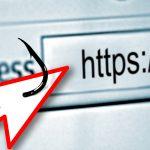Nnice Virus is a dangerous file-encrypting ransomware that targets unsuspecting users by locking their data and demanding cryptocurrency in exchange for file recovery. It primarily spreads via infected email attachments, pirated software, and malicious websites. Once executed on a system, it uses advanced encryption algorithms to render files inaccessible and appends the “.nnice” extension to the locked data. Victims will then find a ransom note named ead_me.txt with payment instructions and a contact email.
This ransomware belongs to the cryptovirus family and behaves similarly to other file-encrypting threats, making recovery extremely difficult without external tools or backups. The ransom note is poorly written and instructs victims to contact maxfromhim@gmail.com, hinting at possible manual negotiation for the decryption key.
Nnice Virus – Threat Summary
| Property | Details |
|---|---|
| Threat Name | Nnice Virus |
| Type | Ransomware, Cryptovirus |
| Encrypted File Extension | .nnice |
| Ransom Note File | ead_me.txt |
| Contact Email | maxfromhim@gmail.com |
| Symptoms | Files renamed with .nnice, ransom note appears, system slowdowns |
| Damage | File encryption, data loss, possible additional malware installation |
| Distribution Methods | Phishing emails, infected attachments, pirated software, shady websites |
| Persistence | Registry changes, drops files in core system directories |
| Danger Level | High |
| Detection Names | May vary by antivirus, examples: Trojan.Ransom.Nnice, Ransom:Win32/Filecoder |
How Nnice Virus Works
Upon infection, Nnice Virus begins scanning the victim’s device for commonly used files such as documents, images, archives, and databases. These files are then encrypted, renamed, and appended with a .nnice extension. This effectively renders them useless.
The ransomware also establishes a connection to a remote server, which allows cybercriminals to execute additional commands or deploy more malicious payloads. It modifies the Windows Registry to ensure persistence and creates files across directories like:
%Local%%AppData%%Temp%%System32%%SystemDrive%
Once the encryption is complete, the following ransom message appears in a text file titled ead_me.txt:
hello,
all your files have been encrypted and you cant decrypt this without the speacial file
contact: maxfromhim@gmail.com
Cybercriminals may offer to decrypt a few small files (under 5MB) as proof that they possess a working decryption mechanism. However, paying the ransom remains a gamble, as there’s no guarantee that full file recovery will be honored.
Manual Ransomware Removal Process
Important: Manual removal is recommended only for experienced users, as incorrect actions can lead to data loss or incomplete removal of the ransomware. If unsure, consider the SpyHunter Removal Method for a guided, automated solution.
Step 1: Disconnect from the Internet
- Immediately disable Wi-Fi or unplug the Ethernet cable to prevent the ransomware from communicating with remote servers.
- This can prevent additional encryption or further infections.
Step 2: Boot into Safe Mode
For Windows Users
- Windows 10/11:
- Press Windows + R, type
msconfig, and press Enter. - Under the Boot tab, select Safe boot and check Network.
- Click Apply, then OK, and restart your PC.
- Press Windows + R, type
- Windows 7/8:
- Restart your PC and press F8 repeatedly before Windows starts.
- Select Safe Mode with Networking and press Enter.
For Mac Users
- Restart your Mac and hold the Shift key immediately after the startup chime.
- Release the key when the Apple logo appears.
- Your Mac will boot in Safe Mode.
Step 3: Identify and Terminate Malicious Processes
Windows
- Open Task Manager by pressing Ctrl + Shift + Esc.
- Look for unusual processes consuming high CPU or memory.
- Right-click on the suspicious process and select End Task.
Mac
- Open Activity Monitor (Finder > Applications > Utilities > Activity Monitor).
- Look for unknown or high-resource-consuming processes.
- Select the suspicious process and click Force Quit.
Step 4: Delete Ransomware Files
Windows
- Open File Explorer and navigate to:
C:\Users\[Your Username]\AppData\LocalC:\Users\[Your Username]\AppData\RoamingC:\Windows\System32
- Identify and delete suspicious files (randomly named or recently modified items).
- Clear temporary files:
- Press Windows + R, type
%temp%, and hit Enter. - Delete all files in the Temp folder.
- Press Windows + R, type
Mac
- Open Finder and select Go > Go to Folder.
- Type
~/Library/Application Supportand check for unfamiliar files or folders. - Remove unknown
.plistfiles from~/Library/LaunchAgents.
Step 5: Remove Ransomware Entries from Registry or System Settings
Windows
- Press Windows + R, type
regedit, and hit Enter. - Navigate to:
HKEY_CURRENT_USER\SoftwareHKEY_LOCAL_MACHINE\Software
- Identify and delete ransomware-related registry entries.
Mac
- Open System Preferences > Users & Groups.
- Select the Login Items tab and remove any unknown startup programs.
- Check
~/Library/Preferencesfor malicious settings.
Step 6: Restore System Using a Backup or Restore Point
Windows
- Press Windows + R, type
rstrui, and press Enter. - Choose a restore point from before the infection and proceed.
Mac
- Restart your Mac and enter macOS Utilities by holding Command + R.
- Select Restore from Time Machine Backup and restore a safe backup.
Step 7: Attempt to Decrypt Files
- Check No More Ransom (www.nomoreransom.org) for available decryption tools.
- If unavailable, restore files from backups.
Automated Ransomware Removal with SpyHunter
If manual removal is too complex or risky, SpyHunter offers a safer, automated method for detecting and removing ransomware.
Step 1: Download SpyHunter
- Get SpyHunter from the official Enigma Software website.
Step 2: Install SpyHunter
- Open the downloaded file (
SpyHunter-Installer.exeor.dmgfor Mac users). - Follow the installation prompts.
- Launch SpyHunter upon completion.
Step 3: Run a Full System Scan
- Click Start Scan Now to detect malware and ransomware.
- Wait for the scan to complete and review detected threats.
Step 4: Remove Detected Ransomware
- Click Fix Threats to remove identified ransomware components.
- SpyHunter will clean your system automatically.
Step 5: SpyHunter’s Custom Malware HelpDesk
- If ransomware persists, use SpyHunter’s Malware HelpDesk for custom malware fixes.
Step 6: Restore Files
- Use backups stored on external drives or cloud storage.
- If no backup is available, check No More Ransom for decryption tools.
Preventing Future Ransomware Attacks
- Keep backups: Use cloud storage or an external hard drive.
- Install a reliable security tool: SpyHunter offers real-time protection against malware.
- Enable Windows Defender or Mac security features for additional protection.
- Avoid phishing emails and unknown attachments.
- Regularly update Windows, macOS, and installed applications.




